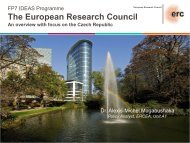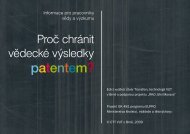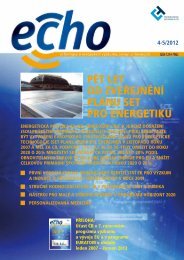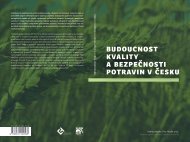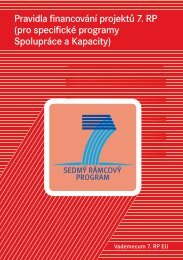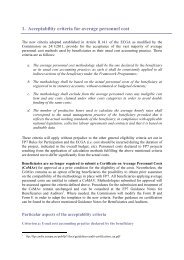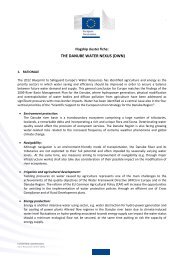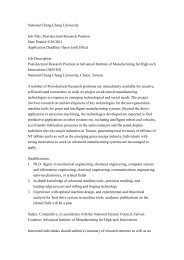Guide to Research and Innovation Strategies for Smart Specialisation
Guide to Research and Innovation Strategies for Smart Specialisation
Guide to Research and Innovation Strategies for Smart Specialisation
You also want an ePaper? Increase the reach of your titles
YUMPU automatically turns print PDFs into web optimized ePapers that Google loves.
preparation <strong>and</strong> discussion of scenarios belong <strong>to</strong> the menu of <strong>for</strong>esight methods. In practice, in<br />
many innovation strategies thematic or 'sec<strong>to</strong>r' working groups have been established <strong>to</strong> discuss<br />
scenarios based on analyses, <strong>and</strong> many lessons of good practice have been learned through these<br />
experiences (see Innovative Regions in Europe Network 2006) 31 .<br />
These groups were useful <strong>to</strong> discuss, validate <strong>and</strong> enrich the analyses underpinning the scenarios.<br />
They also brought in ideas <strong>for</strong> policy implementation <strong>and</strong> pilot projects, which are used <strong>to</strong> refine<br />
the scenarios. They bring in expertise in moni<strong>to</strong>ring <strong>and</strong> evaluation indica<strong>to</strong>rs <strong>and</strong> practice,<br />
which is useful <strong>for</strong> the preparation of the policy mix <strong>and</strong> associated targets. Among the lessons<br />
learned were: the necessity <strong>for</strong> a clear m<strong>and</strong>ate <strong>and</strong> timetable <strong>for</strong> delivery of results; the obvious<br />
need <strong>for</strong> strong leadership <strong>and</strong> good connection with decision-making circles; the key point on<br />
including private sec<strong>to</strong>r in the debates, which is often very difficult <strong>to</strong> achieve; the relevance of<br />
cross-group interactions (notably between groups focusing on clusters); <strong>and</strong> the benefit of<br />
including external expertise <strong>and</strong> benchmarking.<br />
Table 3 - <strong>Innovation</strong> strategies <strong>for</strong> different types of region - according <strong>to</strong> knowledge intensity<br />
of productive fabric<br />
Type of region<br />
Building on current<br />
advantages (science<br />
push/technology led or<br />
a mix)<br />
Knowledge hubs<br />
Main strategy<br />
Supporting socioeconomic<br />
trans<strong>for</strong>mation<br />
Catching-up: <strong>to</strong>wards<br />
the creation of<br />
knowledge based<br />
capabilities<br />
Knowledge <strong>and</strong><br />
technology hubs � � �<br />
Knowledge intensive<br />
city/capital districts � � �<br />
Industrial production zones<br />
S&T intensive production<br />
regions<br />
Skill intensive regions<br />
�<br />
�<br />
�<br />
�<br />
�<br />
�<br />
Medium-tech<br />
manufacturing <strong>and</strong> service<br />
providers<br />
� � �<br />
Traditional manufacturing<br />
regions � � �<br />
Non S&T driven regional systems<br />
Service led <strong>and</strong> natural<br />
resources based regions � � �<br />
Structural inertia or deindustrialising<br />
regions<br />
Primary sec<strong>to</strong>r intensive<br />
regions<br />
�<br />
�<br />
�<br />
�<br />
�<br />
�<br />
Legend: �main priority; � strategic choice; � low priority.<br />
Source: OECD 2011<br />
31 Innovative Regions in Europe Network (2006), RIS Methodological <strong>Guide</strong>, Stage 1.<br />
49



